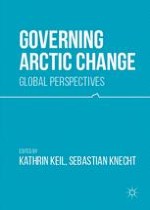2017 | OriginalPaper | Buchkapitel
12. Clean Air and White Ice: Governing Black Carbon Emissions Affecting the Arctic
verfasst von : Carolina Cavazos-Guerra, Axel Lauer, Erika Rosenthal
Erschienen in: Governing Arctic Change
Verlag: Palgrave Macmillan UK
Aktivieren Sie unsere intelligente Suche, um passende Fachinhalte oder Patente zu finden.
Wählen Sie Textabschnitte aus um mit Künstlicher Intelligenz passenden Patente zu finden. powered by
Markieren Sie Textabschnitte, um KI-gestützt weitere passende Inhalte zu finden. powered by
